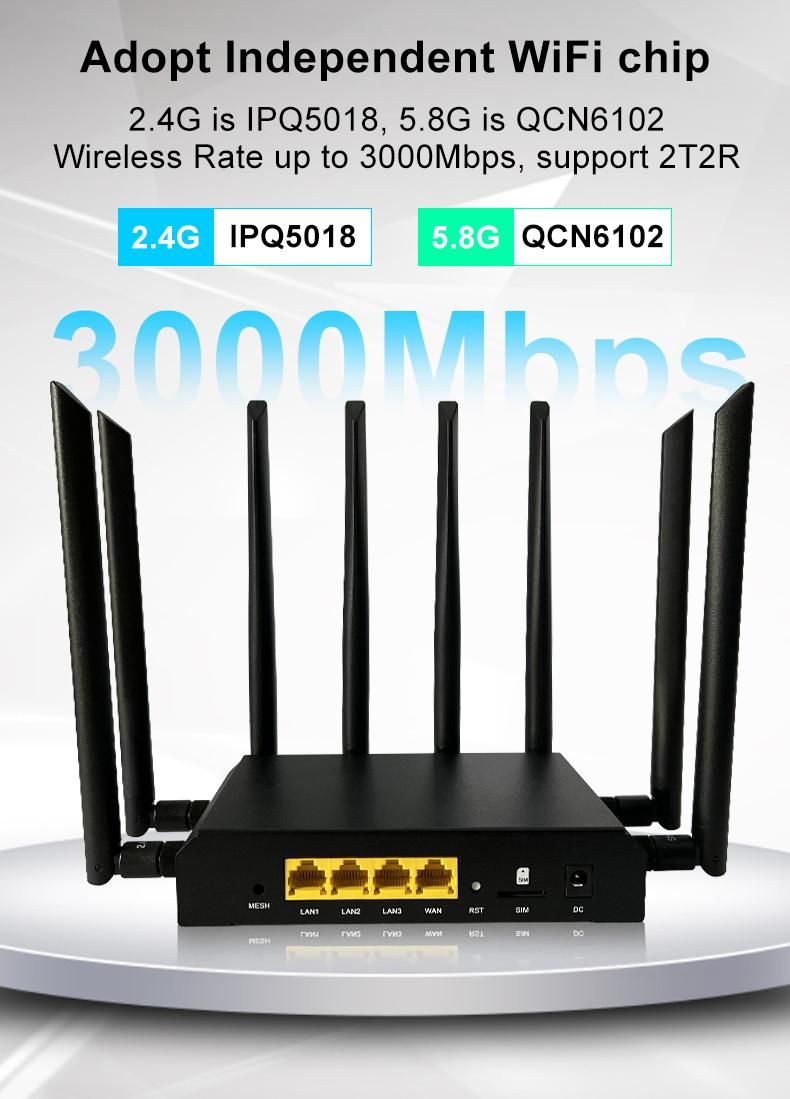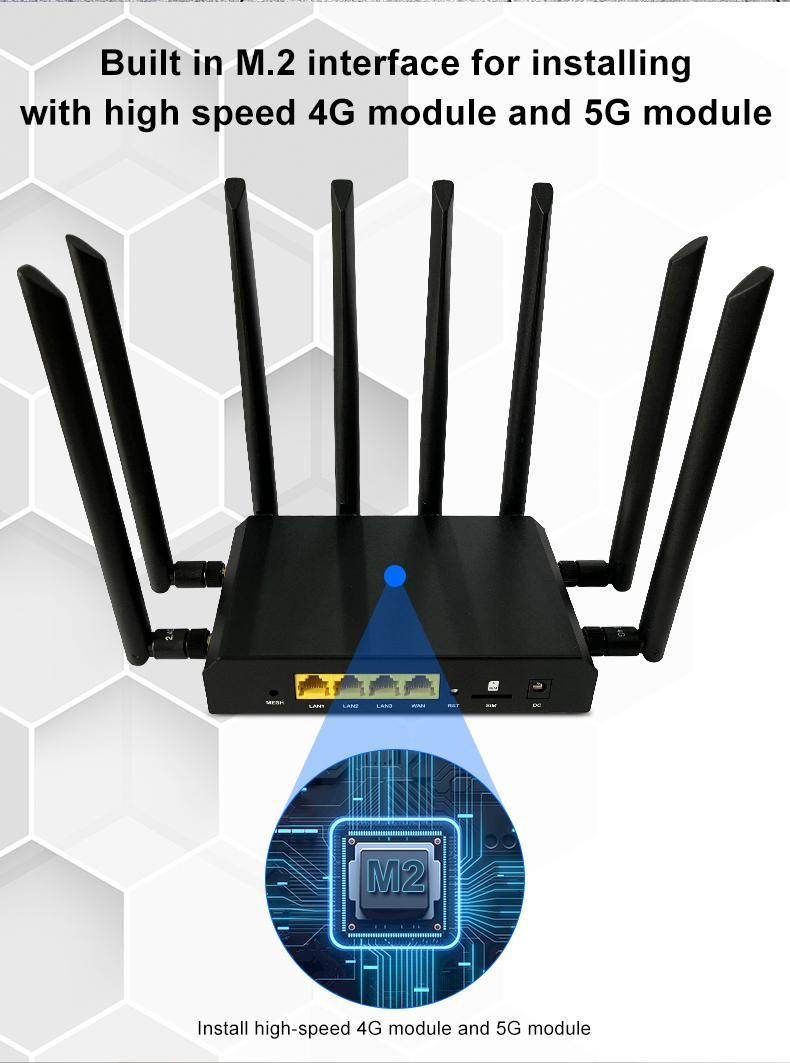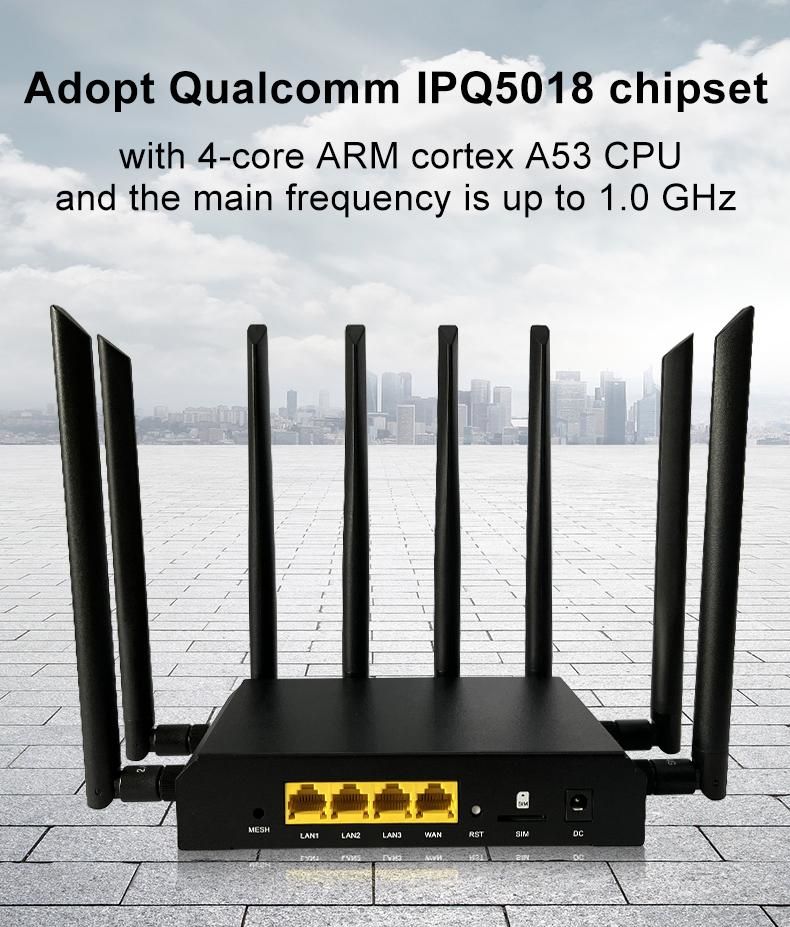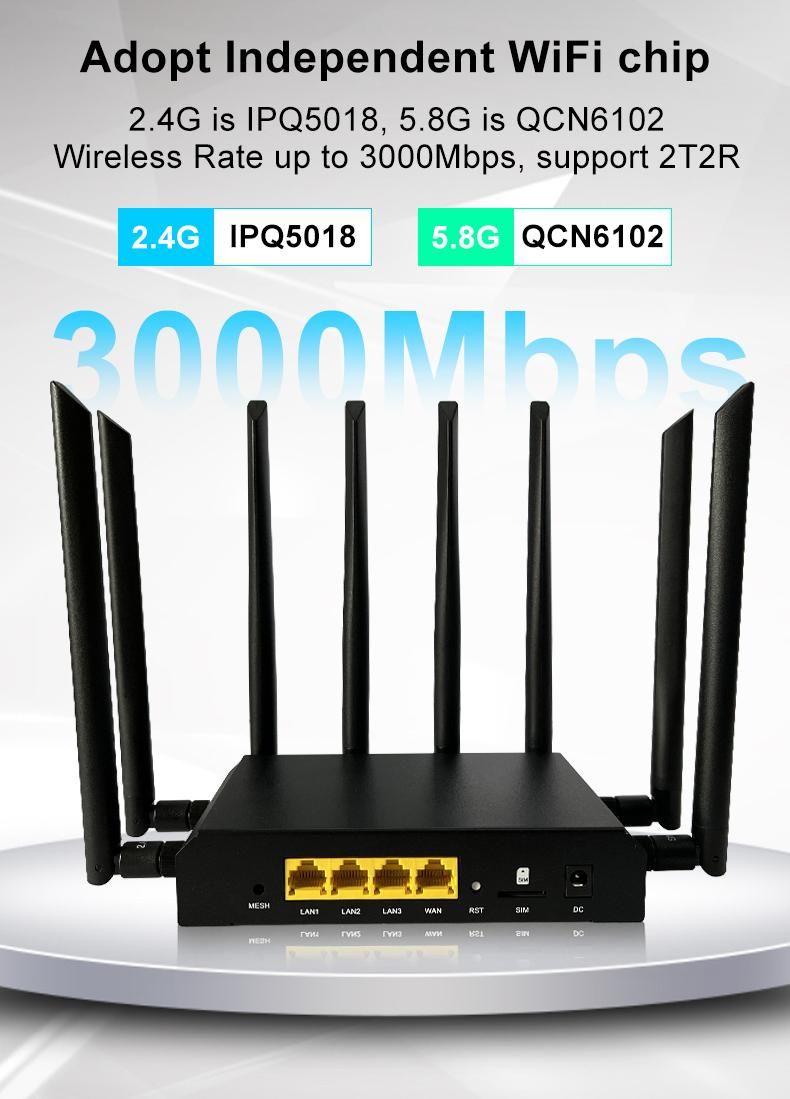WiFi 6 , the 5G era in WiFi The biggest significance of WiFi 6 technology, I think this subtitle may be the most appropriate analogy. What are the three main features of 5G? “Ultra-high bandwidth, ultra-low latency and ultra-large capacity” – this should be familiar to everyone, of course, there is more secure network access, network slicing (NBIoT, eMTC, eMMB) function to achieve more adequate network spectrum and bandwidth utilization, these characteristics make 5G a completely different from 4G a new generation of network communication technology, which is why “4G changes life, 5G changes society”. Let’s look at WiFi 6. There may be many developments, and this string of characters slowly became IEE802.11a/b/g/n/ac/ax, followed by ay. On October 4, 2018, the WiFi Alliance may also feel that this naming is really not conducive to consumer identification, so it changed to the naming method of “WiFi + number”: IEEE802.11n for WiFi 4, IEEE802.11ac for WiFi 5, and IEEE802.11ax for WiFi 6. The benefit of changing the naming is, of course, that the cognition is simple, the larger the number, the newer the technology, and the faster the network. However, even if the theoretical bandwidth of WiFi 5 technology can reach 1732Mbps (under 160MHz bandwidth) (the common 80MHz bandwidth is 866Mbps, plus 2.4GHz/5GHz dual-band integration technology, it can directly reach Gbps access speed), which is much higher than the Internet access speed of our ordinary home broadband 50 500Mbps, in daily use we still find that there are often “fake networking” situations, that is, the WiFi signal is full. Access to the network is as fast as if the Internet was disconnected. This phenomenon may be better at home, but it is more likely to occur in public places such as offices, shopping malls and conference venues. This problem is related to WiFi transmission technology before WiFi 6: the previous WiFi used OFDM – orthogonal frequency division multiplexing technology, which can well support multi-user access, such as MU-MIMO, multi-user-multiple-input and multi-output, but under the WiFi 5 standard, up to four users can be supported for MU-MIMO connections. Moreover, due to the use of OFDM technology for transmission, when there is a large bandwidth application demand among the connected users, it will bring great pressure to the entire wireless network, because this high load demand of a single user not only occupies the bandwidth, but also greatly occupies the normal response of the access point to the network needs of other users, because the channel of the entire access point will respond to the demand, resulting in the phenomenon of “false networking”. For example, at home, if someone downloads thunder, then online games will obviously feel the increase in latency, even if the download speed does not reach the upper limit of broadband access at home, which is to a large extent
Overview of the current state of technology in WIFI 6
Since its invention, its application value and commercial value have been widely recognized by the industry, and it has been used in almost all mobile devices and most indoor environments. As people’s living standards continue to improve, W i F i technology is constantly evolving to provide users with a better wireless access experience. 2 0 1 9 years, the W i F i family welcomed a new member, the W i F i 6 technology was born.
Technical features of WIFI
1.1 Orthogonal Frequency Division Multiple Access
W i F i 6 uses orthogonal frequency division multiple access (O F D M A) channel access technology, which divides the wireless channel into a large number of sub-channels, and the data carried by each subchannel corresponds to different access devices, thereby effectively increasing the data rate. When single-device connections are used, the theoretical maximum rate of the W i F i 6 is 9.6 G b i t /s, which is 4 0 % higher than the W i F i 5. ( W i F i 5 theoretical maximum rate of 6.9 Gbit/s). Its greater advantage is that the theoretical peak rate can be divided into every device in the network, thereby increasing the access rate of each device on the network.
1.2 Multi-user multi-input multi-output technology
W i F i 6 also incorporates Multi-User Multiple Input Multiple Output (M U – M I M O) technology. This technology enables devices to respond simultaneously to wireless access points containing multiple antennas, allowing access points to communicate instantly with multiple devices. In W i F i 5 , access points can be connected to multiple devices at the same time, but these devices cannot respond at the same time.
1.3 Target wake-up time technology
Target wake-up time (T W T, T A R G E T W A K E T I M E) TECHNOLOGY IS AN IMPORTANT RESOURCE SCHEDULING TECHNOLOGY OF W i F i 6, this technology allows devices to negotiate the time and duration of waking up to send or receive data, and the wireless access point can group client devices into different T W T cycles, thereby reducing the number of devices competing for wireless channels at the same time after wake-up. T W T technology also increases the sleep time of the device, which greatly improves the battery life and reduces the power consumption of the terminal. According to statistics, the use of T W T technology can save more than 30% of terminal power consumption, and it is more conducive to W i F i 6 technology to meet the low power consumption requirements of future IoT terminals.
1.4 Basic service set coloring mechanism
In order to improve the overall performance of the system in the dense deployment environment, realize the effective use of spectrum resources, and solve the problem of co-channel interference, W i F i 6 adds a new co-channel transmission mechanism based on the previous generation of technology, namely the basic service set coloring (B S S S C o o o o r i n g) mechanism. By adding B S S C o o o r i n g fields in the header to “stain” data from different basic service sets (BS S), the mechanism assigns a color to each channel, and the receiver can identify the co-channel interference signal early according to the B S S S C O O O R I N G FIELD OF THE PACKET HEADER AND STOP RECEIVING IT, AVOIDING WASTING TRANSMISSION AND RECEIVING TIME. Under this mechanism, if the received headers are of the same color, it is considered to be an interfering signal within the same ‘B S S, and the transmission will be delayed; Conversely, it is considered that there is no interference between the two, and the two signals can be transmitted on the same channel and frequency.
2 Typical application scenarios of WiFi 6 technology
2.1 Large broadband video service bearer
With the continuous improvement of people’s requirements for video experience, the bitrate of various video services is also increasing, from SD to HD, from 4K to 8K, and finally to the current V R video. However, with this, the transmission bandwidth requirements have increased, and meeting the ultra-wideband video transmission requirements has become a major challenge for video services. The 2.4G H z and 5G H z bands coexist, and the 5G H z band supports 160M H z bandwidth at rates up to 9.6 G b i t /s. The 5G H z band has relatively less interference and is more suitable for transmitting video services.
2.2 Low-latency service bearers such as online games
Online game services are strongly interactive services and have higher requirements for bandwidth and latency. Especially for emerging V R games, the best way to access them is W i F i wireless. The O F D M A channel slicing technology of W i F i 6 can provide a dedicated channel for games, reduce latency, and meet the requirements of game services, especially V R game services, for low latency transmission quality.
2.3 Smart home intelligent interconnection
Intelligent interconnection is an important part of smart home business scenarios such as smart home and smart security. Current home connectivity technologies have different limitations, and W i F i 6 technology will bring opportunities for technical unification to smart home interconnection. It optimizes the integration of high density, large number of access, low power consumption and other characteristics, and at the same time can be compatible with various mobile terminals commonly used by users, providing good interoperability.
As an emerging wireless LAN technology in recent years, WiFi6 technology is favored by people for its high speed, large bandwidth, low latency and low power consumption, and can be widely used in video, games, smart home and other business scenarios, providing more convenience for people’s lives.
Post time: May-06-2023







